What a thermal paste must and must not solve
For this, I’m going to go back to something that I discussed a long time ago. After all, there are no really smooth surfaces, even if they may look that way at first glance. Would you like to see a cool, unused CPU? I have something from AMD to start with, so please be brave. I can see something like this under the microscope:
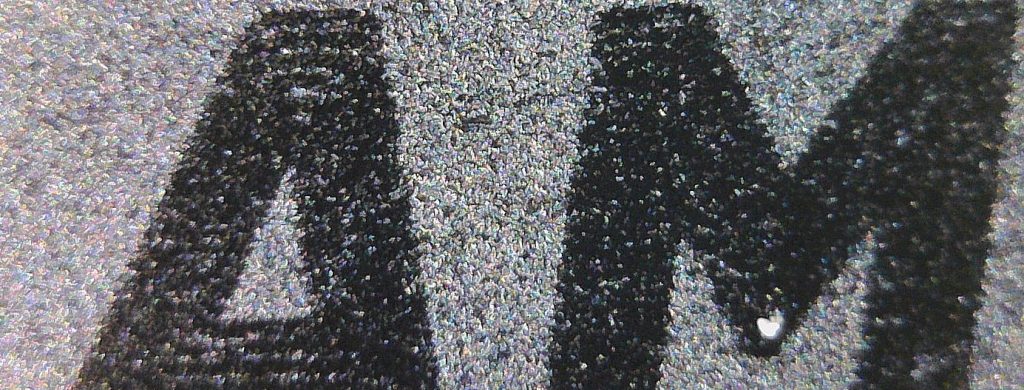
But even the Intel fanboys have no reason to gloat, because a current Core processor doesn’t look a bit better under the microscope. Different heatspreader, same problem. But see for yourself:

Well, and the coolers too… The next picture shows the greatly enlarged copper base of a supposedly smooth radiator base. In addition to the tool marks left by the grinding process at the factory, we can still see the light-colored residues of the first thermal paste, which have crept in exactly where you can’t easily get them out with a normal cloth. This is why suitable solvents are always a must when rebuilding. Isopropyl alcohol is a good preventative measure against residual paste collapse. What good is the best paste if the old grime sticks even more firmly in the cracks than many politicians on their chairs?
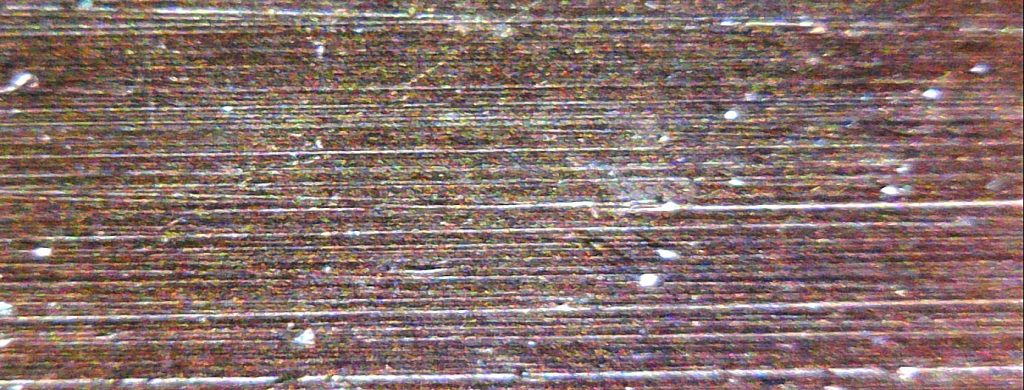
If you now place two such surfaces on top of each other, i.e. the CPU heatsink and the cooler base, then the thermal paste must fill in all unevenness and air gaps and thus also completely exclude the air, which is an almost perfect insulator. The result is a composite of a total of three materials, in which we must now take a closer look at the thermal compound. This is because two things are primarily important here: the thickness of the layer and its thermal conductivity or, conversely, the thermal resistance. The former air layer between the CPU heatspreader (dark gray) and the copper base (reddish) is completely filled by the paste (light gray):
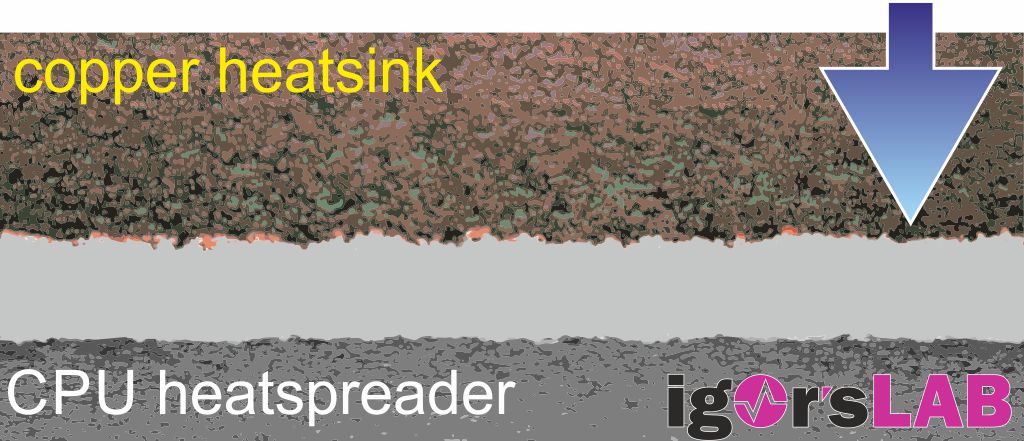
In addition to the grinding marks and material unevenness, the shape of the heatspreader also plays a role. The manufacturing processes are somewhat different, as is the curvature, unfortunately. The diagram below shows (somewhat exaggerated) why you can’t do without thermal paste and why you have to think a little when applying it to the processors of both manufacturers. Excess paste will certainly come out of the AMD processor a little easier than the Intel processor, which leads to a thicker layer more quickly. And we’ll discuss what this leads to in a moment.
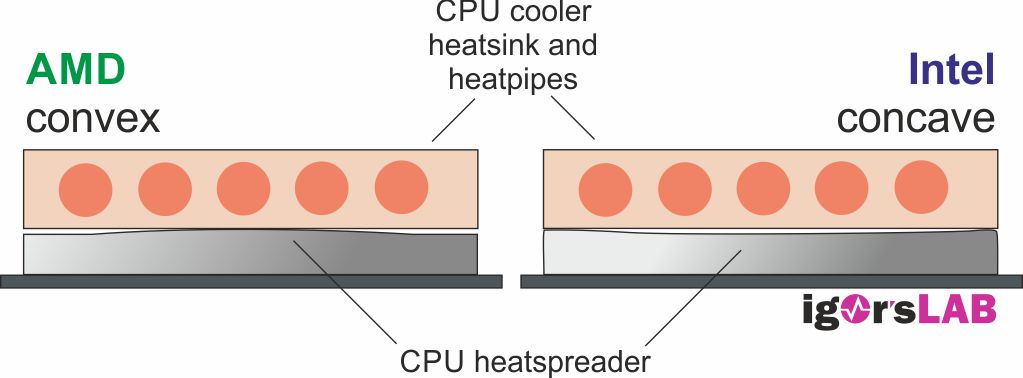
I can also provide you with a practical example here, whereby in this case I have even measured the somewhat flatter processors that have already been used once. Let’s start with AMD again, in this case it’s a Ryzen 7 3800X (which could also be a Ryzen 7 5800X, as the IHS has remained the same):
And now all that again for a more recent Intel CPU:
Graphics cards deviate slightly here, as the chip is exposed. The most important thing here is to fill the possible gaps between the very straight and smooth die and the cooler base. Apart from the well-known problems with curved vapor chamber bottoms, significantly thinner layers can (and must!) be used here. Unless you have a current Ampere card such as an RTX 3080 or RTX 3090, where even the chip is convexly curved:
I will exclude the liquid metal fraction here anyway, because although the whole thing is subject to the same laws, it almost approaches the ideal due to the metallic connection. If you still want to do the math later, you are of course welcome to do so (and then quote the result). And to be completely honest, a good paste, together with good skills on the part of the user, can still achieve results that are not bad either. Know how.
Marketing and truth
Nobody can reinvent physics and bring groundbreaking products to the market that promise extreme differences. Sure, there is always room for improvement, but we have already reached the limits where conventional pastes can hardly improve significantly. Almost all of the pastes are now really good, unless you go for a completely discontinued or budget product. Thermal pastes are typically characterized by the highest possible thermal conductivity in the form of watts per meter Kelvin (W/(m*K)). Celsius and Kelvin are to be equated here, as it is only the rate of temperature increase that is important and the rise or fall in temperature is specified here. I will explain this information and why it is put together in this way in a moment.
It was precisely this “K” value of thermal conductivity that marketing discovered for itself some time ago and drives the helpless little K through the village as a compliant pig. Because the higher the value on the box, the more expensive the contents can be sold to the man (or woman or it). Of course, it’s not that the “K” value is completely irrelevant, but let’s do the math to see what difference is really noticeable and where the snake oil wellness begins. And usability is another factor that can influence the results achieved in practice more than the pure chemical composition.
And it is not even certain that the values printed on the product are correct. You can hardly check it anyway, especially as even the manufacturer sometimes doesn’t know or can’t check what he has actually printed on it and what it really contains. Or they do know, although the quality of the content varies Well, units are not that important, the main thing is that the number pays off. The industry remains silent, usually for good reason. After all, the pastes are actually produced by third parties and only then make their way via the bottlers and further processors to the traders in the field of thermal paste. And often enough, you then actually get an identical paste from different suppliers in the stores under different names. The profit margins? Tempting!
Skills versus snake oil? Not quite, but we’ll see on the next page that math can even be fun. So I’ll hold out the formula stick to you in a moment, you’ll just have to jump over it yourself. But you’ll get there. And as for marketing and profits: I even have a separate chapter for that later.
- 1 - The three big P's - introduction to pastes, pads and putty
- 2 - The purpose of thermal pastes
- 3 - The big debate between cheap and expensive
- 4 - The matrix as the basis for all pastes and pads
- 5 - Silicone-based pastes: optimization, durability, decomposition
- 6 - Thermally conductive fillers are important
- 7 - How the degree of grinding influences performance
- 8 - Silicone modification for low temperatures and LN2 overclocking
- 9 - The paste production process and possible hurdles
- 10 - Special case liquid metal (LM)
- 11 - Special case of graphite pads and phase changers
- 12 - Temperature window, expansion behavior, application
- 13 - Ageing and decomposition of pastes and pads
- 14 - Manufacturer vs. bottler, misleading marketing and conclusion

















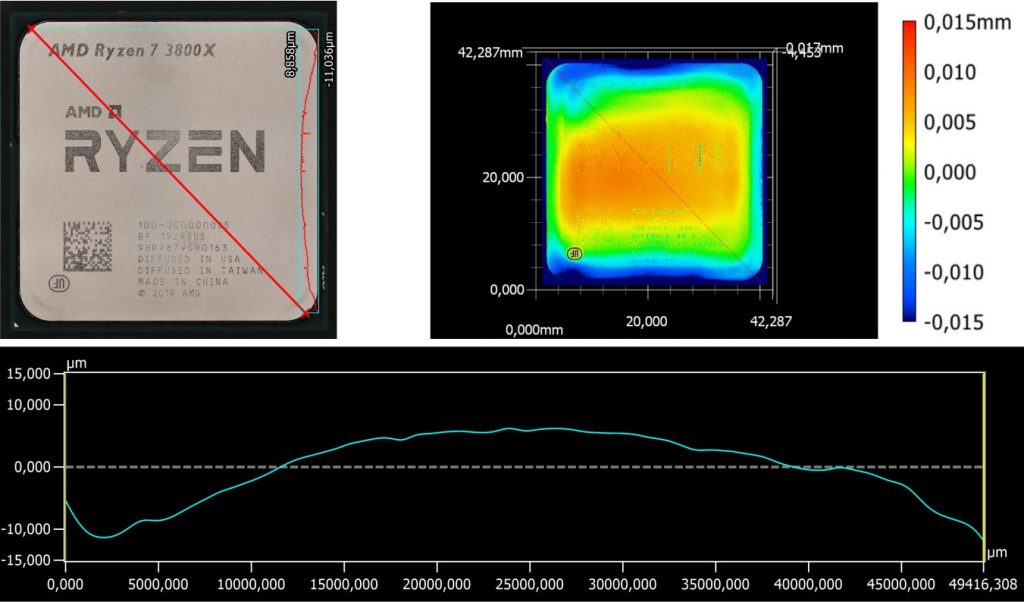
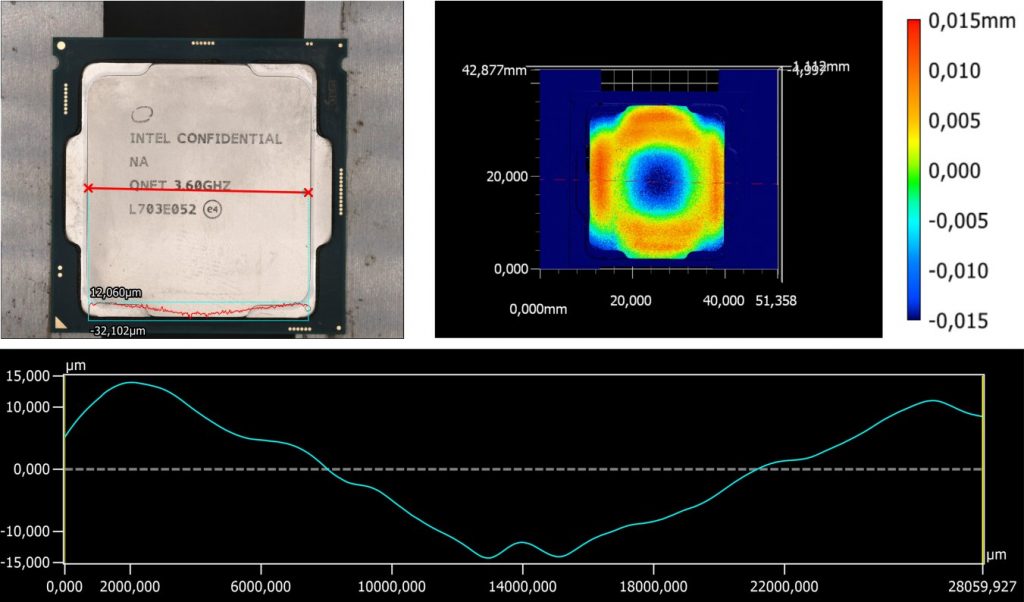
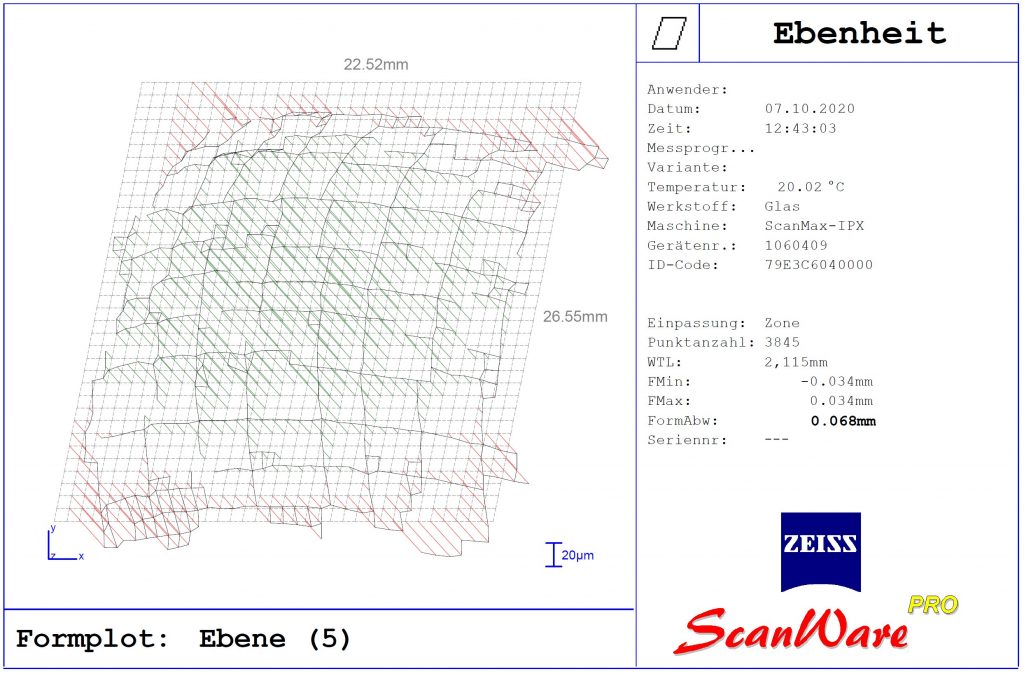


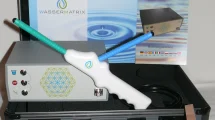







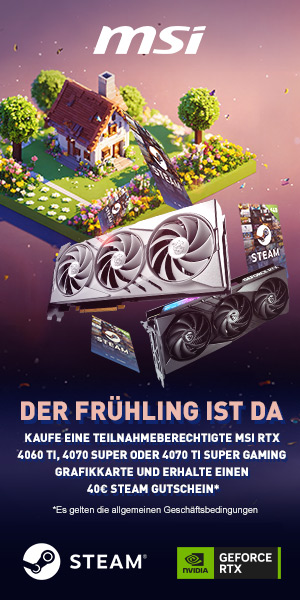









216 Antworten
Kommentar
Lade neue Kommentare
Veteran
1
Veteran
Urgestein
Mitglied
Urgestein
1
Urgestein
Urgestein
Mitglied
Urgestein
1
Mitglied
Urgestein
1
Urgestein
1
Veteran
Alle Kommentare lesen unter igor´sLAB Community →